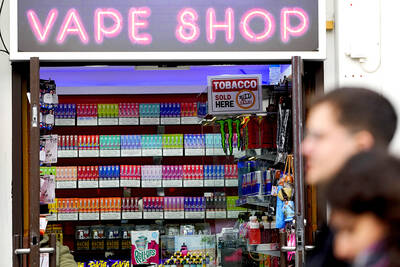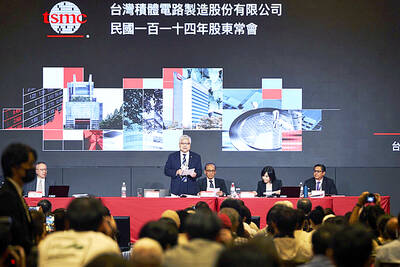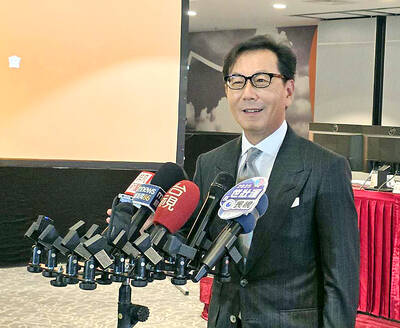Bitcoin yesterday broke through the US$10,000 barrier for the first time as it extends a stratospheric rise that has delighted investors, but sparked fears of a bubble.
The virtual currency hit a high of US$10,903 in Asia, according to Bloomberg News, about 14 times its value at the start of the year.
The breakthrough is the latest in a spectacular run for the online money dubbed “digital gold” by its advocates, which began life in 2009 as a bit of encrypted software supposedly written by an unknown coder with a Japanese-sounding name.
Bitcoin, which was valued at just a few US cents when it was launched, has no legal exchange rate, no central bank backing it and is traded on specialist platforms.
What began as the preserve of computer nerds and financial experts has gained a following among a broader group seeking alternatives to traditional investments, while it has been used to pay for items from a pint in a London pub to a manicure.
However, the virtual currency has attracted as much anger as praise.
The boss of JPMorgan Chase & Co labeled it a fraud, while China has closed down Bitcoin trading platforms and South Korea this week expressed concern it could lead young investors to become embroiled in fraud.
It got a big boost last month when exchange giant CME Group announced it would launch a futures marketplace for bitcoin, which has not been listed on a major bourse before.
The announcement sparked a surge in its value — it has risen 50 percent since last month alone.
The current market value of bitcoin is now about US$180 billion, according to Coinmarketcap.com, which tracks the market capitalizations of cryptocurrencies.
That puts it within touching distance of Coca-Cola, which is worth US$195 billion.
However, the spectacular rate of growth, which has seen it increase in value from a low this year of US$752 in mid-January, has also triggered concerns, with critics noting the currency has suffered wild swings in the past.
“This is a bubble and there is a lot of froth. This is going to be the biggest bubble of our lifetimes,” hedge fund manager Mike Novogratz said at a cryptocurrency conference on Tuesday in New York.
Stephen Innes, a senior trader and market analyst at Oanda Asia Pacific in Singapore, warned of “crazy numbers” and added: “I’m a little bit fearful that retail traders are jumping in under the false guise of this will run on forever.”
“We know things never go in a straight line,” he said.
Other commentators were more positive, saying the unit’s surging popularity would attract cash from traditional investors, such as hedge funds and asset managers.
“I think the momentum is still very much to the upside,” said Kay Van-Petersen, a macro and crypto strategist with Saxo Bank in Singapore.
He said it could still suffer pullbacks, but predicted it would be worth US$50,000 to US$100,000 in the next six to 18 months.

CAUTIOUS RECOVERY: While the manufacturing sector returned to growth amid the US-China trade truce, firms remain wary as uncertainty clouds the outlook, the CIER said The local manufacturing sector returned to expansion last month, as the official purchasing managers’ index (PMI) rose 2.1 points to 51.0, driven by a temporary easing in US-China trade tensions, the Chung-Hua Institution for Economic Research (CIER, 中華經濟研究院) said yesterday. The PMI gauges the health of the manufacturing industry, with readings above 50 indicating expansion and those below 50 signaling contraction. “Firms are not as pessimistic as they were in April, but they remain far from optimistic,” CIER president Lien Hsien-ming (連賢明) said at a news conference. The full impact of US tariff decisions is unlikely to become clear until later this month

Popular vape brands such as Geek Bar might get more expensive in the US — if you can find them at all. Shipments of vapes from China to the US ground to a near halt last month from a year ago, official data showed, hit by US President Donald Trump’s tariffs and a crackdown on unauthorized e-cigarettes in the world’s biggest market for smoking alternatives. That includes Geek Bar, a brand of flavored vapes that is not authorized to sell in the US, but which had been widely available due to porous import controls. One retailer, who asked not to be named, because

CHIP DUTIES: TSMC said it voiced its concerns to Washington about tariffs, telling the US commerce department that it wants ‘fair treatment’ to protect its competitiveness Taiwan Semiconductor Manufacturing Co (TSMC, 台積電) yesterday reiterated robust business prospects for this year as strong artificial intelligence (AI) chip demand from Nvidia Corp and other customers would absorb the impacts of US tariffs. “The impact of tariffs would be indirect, as the custom tax is the importers’ responsibility, not the exporters,” TSMC chairman and chief executive officer C.C. Wei (魏哲家) said at the chipmaker’s annual shareholders’ meeting in Hsinchu City. TSMC’s business could be affected if people become reluctant to buy electronics due to inflated prices, Wei said. In addition, the chipmaker has voiced its concern to the US Department of Commerce

STILL LOADED: Last year’s richest person, Quanta Computer Inc chairman Barry Lam, dropped to second place despite an 8 percent increase in his wealth to US$12.6 billion Staff writer, with CNA Daniel Tsai (蔡明忠) and Richard Tsai (蔡明興), the brothers who run Fubon Group (富邦集團), topped the Forbes list of Taiwan’s 50 richest people this year, released on Wednesday in New York. The magazine said that a stronger New Taiwan dollar pushed the combined wealth of Taiwan’s 50 richest people up 13 percent, from US$174 billion to US$197 billion, with 36 of the people on the list seeing their wealth increase. That came as Taiwan’s economy grew 4.6 percent last year, its fastest pace in three years, driven by the strong performance of the semiconductor industry, the magazine said. The Tsai